Many people are unaware that beneath the modern city of Nottingham are hundreds of caves, carved into the soft sandstone upon which the city stands. Yet it is the case that the city has a complex of over 500 caves. None of these caves are natural. They are all man made.
It is impossible to say when the first caves were dug and for what purpose but it is believed that druids in pre Roman times carved out places of worship here. Later on the Romans may have used them as a crematorium as evidenced by Roman tiles found in a ventilation shaft.
Many of these date back as far as the Dark Ages. More recent ones were used for industrial purposes and even as bomb shelters in the 1940s. It is claimed that Nottingham has more man-made caves than anywhere in the UK and nowadays the cave network has Ancient Monument Protection status.
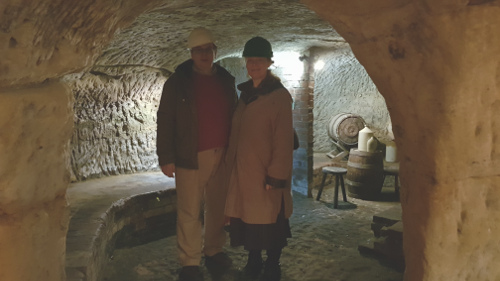
My wife and I in the caves
So significant a feature were the caves that one of the earliest descriptions of the city in The Life Of King Alfred, by Welsh monk and historian, Asser. Around the year 868, the monk was travelling to Lincoln and recorded in his diary; “…..this day passed Tigguacobauc.” This word, in his native Welsh tongue, probably meant ‘cavy house’, or ‘Place of Caves’.
In the reign of Edward I one set of caves near the River Leen was developed into a chapel which was eventually gifted to the king.
The caves played their part in history more than once. In the year 1330, Edward III used a cave to gain entrance to Nottingham castle where they captured Roger de Mortimer who at the time was the defacto ruler of England. Mortimer was taken away and later executed. After this time the tunnel was called Mortimer’s Hole.
These ancient caves were eventually used by the poor for housing for centuries and certainly throughout the entire medieval period. Eventually this practice came to an end around 1845, when the St. Mary’s Enclosure Act made the rental of cellars and caves as homes illegal.
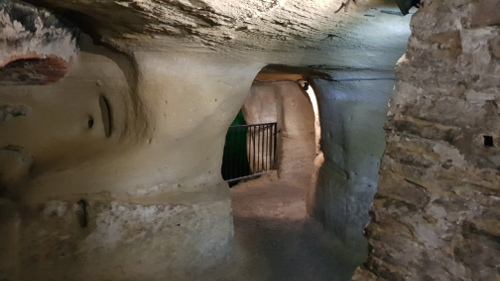
Heading down into the caves you find areas where brickwork is replaced with the sandstone.
In the caves you can find man made features such as a well leading down from higher up, through the caves and down further. In this case you can actually look up through the original well shaft from the cave level towards the original street level as well as downwards from the cave and into the bedrock.
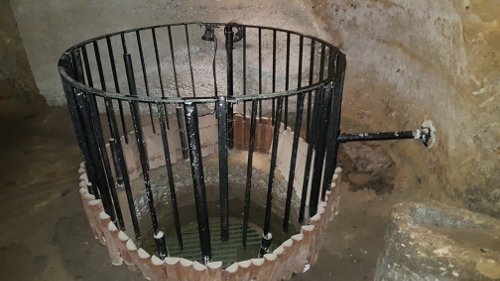
A well.
In addition to wells the caves contain cess pits carved out of the bedrock. Thankfully the contents have long since been removed!
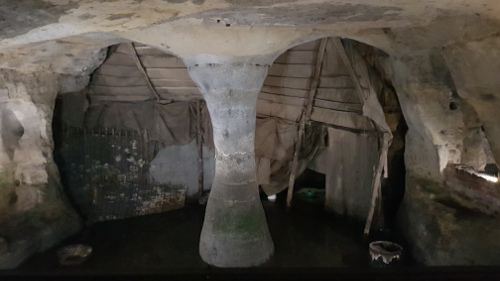
Cess Pit
Other caves contain underground tanneries where hides would be treated in beds filled with urine. This one is said to be the only tannery in Europe built in a cave. It would have been a very smelly place to go to work but it did have its benefits as the tanners rarely contracted the plague as neither the rats nor the flees that carried the plague endured the conditions.
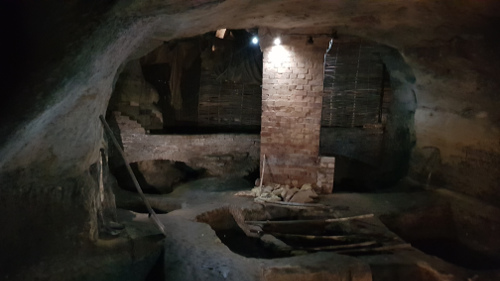
Tannery
There is a cave once used as a tavern cellar. The ledges would be where the beer would be stored – off the ground. In recent times some pubs and even restaurants have started to use the cellars again. You can even dine in one of the caves.
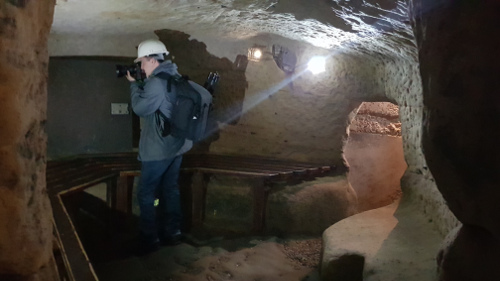
Tavern Cellar
Some of the cellars were later used to house machinery during the industrial revolution. The Luddites objected to the machines which they saw a threat to the traditional labour force and so they sabotaged the machines in the year 1811 and the following few years. In Nottingham the machinery was sometimes in the caves and so they would sneak in and do their damage. Someone kept watch above ground and if the authorities turned up they would drop coins through small holes to warn those below to flee. It is possibly a source of the phrase “the penny has dropped”..
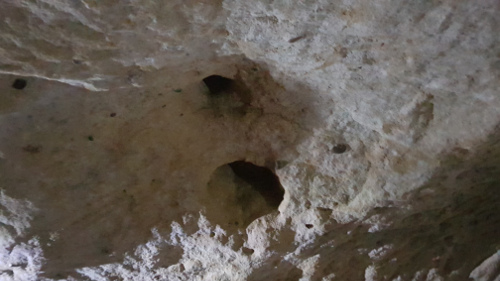
In the Second World War Nottingham was raided by the Luftwaffe and the city used the caves as shelters.

Caves, many of which have been forgotten about for centuries continue to be found. Indeed Nottingham council employs an archaeologist to find them and keep track of them all.
One complex of caves lies beneath Broadmarsh shopping centre which was built over the 19th century Narrow Marsh slums whose inhabitants used the caves. Today you can visit the caves either on tour or self guided. the tour lasts about an hour and is very informative so well worth booking into one.

